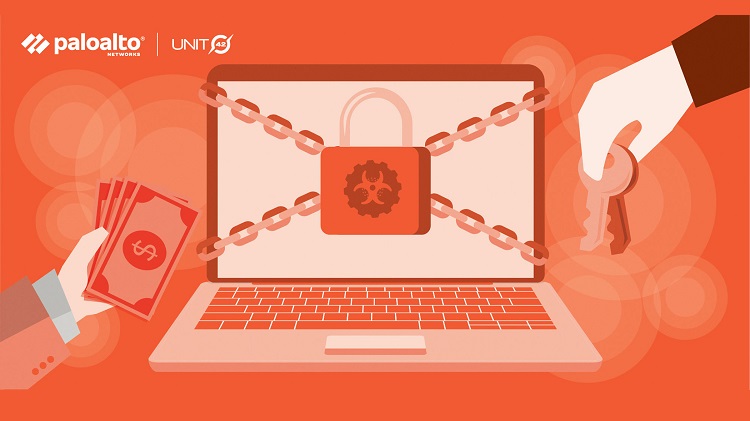Conti ransomware stands out as one of the most ruthless of the dozens of ransomware gangs that we follow. The group has spent more than a year attacking organizations where IT outages can have life-threatening consequences: hospitals, 911 dispatch carriers, emergency medical services and law enforcement agencies. Ireland has yet to recover from an attack in mid-May that prompted the shutdown of the entire information technology network of the nation’s healthcare system – prompting cancellation of appointments, the shutdown of X-ray systems and delays in COVID testing.
Conti also stands out as unreliable. We’ve seen the group stiff victims who pay ransoms, expecting to be able to recover their data.
The FBI has connected Conti to more than 400 cyberattacks against organizations worldwide, three-quarters of which are based in the U.S., with demands as high as $25 million. This makes Conti one of the greediest groups out there.
We’ve followed Conti for more than a year through our work helping organizations respond to ransomware attacks. It appears to be one of many private cybercrime groups that have set up their operations by leveraging the booming ransomware-as-a-service (RaaS) ecosystem. Such gangs obtain their foothold in the networks of their victims by purchasing access from other threat actors, who sell it as a commodity. They can also procure infrastructure, malware, communications tools and money laundering from other RaaS providers. Most of these actors use the same methods of access found in many ransomware attacks, such as phishing emails and exploiting unprotected internet-facing applications, the lack of multi-factor authentication (MFA), as well as the typical avenues used to preserve and enhance access once it’s achieved, such as through the use of Cobalt Strike or PowerShell.
These approaches are not particularly clever or sophisticated, but often they are effective. Conti’s methodology often follows the “double extortion” approach that many leading ransomware groups are presently using. When using double extortion, attackers will not only lock up a victim’s files and demand ransom, but they will also steal files and threaten to publish them on a website or otherwise leak them if their initial ransom demand is not met.
But Conti’s methods do have atypical elements. Usually, the more successful ransomware operators put a lot of effort into establishing and maintaining some semblance of “integrity” as a way of facilitating ransom payments from victims. They want to establish stellar reputations for “customer service” and for delivering on what they promise – that if you pay a ransom, your files will be decrypted (and they will not appear on a leak website). Yet in our experience helping clients remediate attacks, Conti has not demonstrated any signs that it cares about its reputation with would-be victims.
In one recent case, Conti did not return a client’s files who had paid the ransom. This client got only a small fraction of the file restorations that were promised before the Conti ransomware representatives disappeared back into the dark web. In another case, our client needed an inventory of all files accessed, so that they could notify parties whose data was affected. Conti agreed to share that information if a payment was made, then changed their minds, saying, “We do not own that data anymore. It was deleted and there is no chance to restore it.” Like many ransomware gangs, Conti is constantly adapting to changes, including recent heightened scrutiny by law enforcement and policy makers following high-profile disruptive attacks on the Colonial pipeline and healthcare organizations. When Ireland’s healthcare system refused to pay any ransom, Conti provided the agency with what it said was a free decryption key. But there was a twist: The group maintained that it would still make good on its “double extortion” threat to publish stolen data on its leak site.
Unfortunately, keeping Conti out of your network often isn’t simple. A primary means of infection appears to be through phishing scams, and attackers are constantly upping their game in this area. While phishing emails used to be pretty easy for almost anyone to spot, particularly after some awareness training, we are seeing increasingly sophisticated attacks in which the threat actors have done plenty of homework on their intended victims. Sometimes they’ll send a blitz of scam emails to employees throughout an organization, and it takes only one to open the attachment and release the malware into the network.
Ransomware attacks are getting easier to unleash, and the rewards to the attackers are still growing by leaps and bounds. Accordingly, it continues to be a growth industry that will attract multitudes of new practitioners, and it is likely that high-profile targets will continue to fall.
Palo Alto Networks detects and prevents Conti ransomware in the following ways:
• WildFire: All known samples are identified as malware.
• Cortex XDR with:
o Indicators for Conti ransomware.
o Anti-Ransomware Module to detect Conti ransomware encryption behaviors.
o Local Analysis detection for Conti binaries.
• Next-Generation Firewalls: DNS Signatures detect the known Conti ransomware command and control (C2) domains, which are also categorized as malware in Advanced URL Filtering.
• AutoFocus: Tracking related activity using the Conti tag.
• Unit 42 Security Consulting: The Ransomware Readiness Assessment detects any hidden threats, tests for preparedness and provides remediation recommendations.
Additionally, Indicators of Compromise (IoCs) associated with Conti are available on GitHub.











